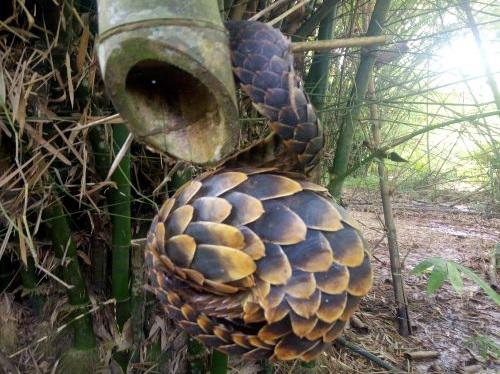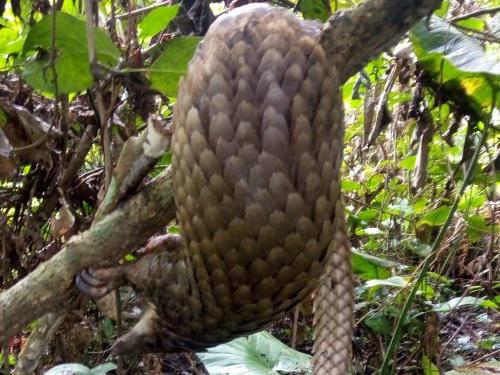Brou Guy-Mathieu Assovi
The aim of this project is to research pangolin habitat use and pangolin utilization by local communities in Côte d’Ivoire.
Our specific objectives are:
1) Investigate pangolin resource selection (habitat use and prey preference)
2) Investigate local community use of pangolins
3) Build the capacity for pangolin research and management in Cote d’Ivoire, and
4) Raise awareness in local communities
The ecological data we collect will provide the basis for understanding pangolin home range, movement dynamics, and the ecological factors affecting their distribution. The socioeconomic data on local pangolin utilization and consumption will provide a better understanding of the drivers of pangolin exploitation. Implementation of both the ecological and socioeconomic data collection will provide a first platform for outreach with local communities in Cote d’Ivoire. Ultimately, our project will provide much needed baseline knowledge to ultimately draft an Ivorian national pangolin management strategy.

Phataginus tetradactyla.
The white-bellied pangolin (Phataginus tricuspis) (EN) and the black-bellied pangolin (Phataginus tetradactyla) (VU) (IUCN) are the two species occurring in the Tanoe-Ehy Swamp Forest. Pangolins have recently been labelled the most heavily trafficked mammals in the world and are in dreadful conservation action needs.

Phataginus tricuspis.
The main threat to pangolins is hunting and poaching for illegal international trade, in addition to habitat loss.
Our focused species remain largely understudied, with nothing published from Côte d’Ivoire. Considering the growing number of threats facing that species, it is vitally important to understand their ecological and socioeconomical requirements in order to develop a comprehensive conservation and management plan.
Methodology
1) Pangolin Resource Selection
Pangolins survey using Recces methods
Recce walks and thermal imaging scopes will be used to search for and survey pangolins. We are listening carefully for active pangolins and noting tracks and direct encounters.
Pangolins Radio telemetry:
Pangolins will be tagged using VHF radios. We will track and visually confirm each individual relocation up to five times per week.
Habitat characterization:
Habitat will be described at each pangolin location and relocation, including tree species occupied, vertical height, etc. Using 30 x 30 m vegetation plots. Global canopy openness (or canopy closure) will be estimated using spherical densitometer. Prey items available in each located pangolin microhabitat will be collected and then preserved in 75% ethanol for subsequent identification.
2) Community Use of Pangolins
We will conduct semi-structured interviews, participant observation, and focus groups in four target villages in/around the study site. We will also conduct interviews and market follows in four large towns neighboring the study site.
3) Community Platform
We will organize three meetings per community and carry out at least one workshop with protected areas and wildlife authority staff.
We anticipate developing a platform of five members in every village for pangolin conservation.
4) Education and awareness raising campaigns
We will conduct “door-to- door” awareness raising campaigns involving local community members, especially hunters.
Expected outcome
1) Home range, habitat and prey selection are characterized.
2) The economic, protein, and cultural importance of pangolins are characterize.
3) Platform of training and data established at individual and institutional levels.
4) Community-based foundations for sustainable pangolin management are established.